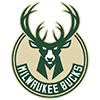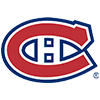Jharel Cotton, RHP (24)
The A's have little to lose by trying out their farmhands as the season comes to a close, with playoff contention being nonexistent this season and a continuous line of failed attempts to pan for gold on the Oakland pitching mound. Cotton joins Raul Alcantara among the new faces in Oakland, but the latter completely missed the preseason top-10 A's prospects on most (if not all) lists, while Cotton received back-end billing in a loaded Dodgers system. Listed at just 5-foot-11 and 195 pounds, Cotton will have to succeed quickly and efficiently while displaying the stamina and moxie to make it through the order multiple times, lest he get banished to the bullpen by the gods of conventional wisdom due to a frame that is less than ideal.
The Stats
| IP | K | BB | H | HR | WHIP | ERA | |
| MLB | 18.0 | 11 | 3 | 11 | 2 | 0.78 | 1.50 |
| AAA | 135.2 | 155 | 39 | 108 | 20 | 1.08 | 4.31 |
Jharel Cotton, RHP (24)
The A's have little to lose by trying out their farmhands as the season comes to a close, with playoff contention being nonexistent this season and a continuous line of failed attempts to pan for gold on the Oakland pitching mound. Cotton joins Raul Alcantara among the new faces in Oakland, but the latter completely missed the preseason top-10 A's prospects on most (if not all) lists, while Cotton received back-end billing in a loaded Dodgers system. Listed at just 5-foot-11 and 195 pounds, Cotton will have to succeed quickly and efficiently while displaying the stamina and moxie to make it through the order multiple times, lest he get banished to the bullpen by the gods of conventional wisdom due to a frame that is less than ideal.
The Stats
| IP | K | BB | H | HR | WHIP | ERA | |
| MLB | 18.0 | 11 | 3 | 11 | 2 | 0.78 | 1.50 |
| AAA | 135.2 | 155 | 39 | 108 | 20 | 1.08 | 4.31 |
Cotton has maintained modest K counts in the bigs, but he was a strikeout maven in the minors this season, with 10.3 K/9 split between two Triple-A stops, both of which were in the hitter's paradise of the Pacific Coast League but neither of which involved one of the many nightmarish home parks in the circuit. Cotton enjoyed great peripherals but poor run prevention with the Dodgers' affiliate in Oklahoma City, posting a 4.90 ERA across 97.1 innings, but everything came down in his 38.1 innings with the Athletics' Triple-A affiliate in Nashville - his walks and homers allowed were each essentially cut in half, plus the hit rate took a big dip and brought his ERA with it. Even the strikeouts went down, and though anything can happen in such a low sample, the across-the-board drops have been striking in his first six weeks with a new organization.
The Stuff
Cotton has a mediocre fastball with league-average velocity, averaging 92.8 mph on the pitch so far in the majors, spiking to the mid-90s on the heat. He also brings a cutter to the table that is just a few ticks off his fastball velocity, along with a bit of drop and some glove-side movement, enough to throw hitters off-balance when they're looking for the heater. His secondary of choice, however, is a ridiculous changeup that he brings to the table 24.1 percent of the time and which has been known to take on Bugs Bunny characteristics.
He doesn't always throw the version of his changeup that has such exaggerated movement, usually opting for a more traditional version that features fastball arm-speed and a pitch with late fade and some arm-side run. El cambio has finished four of his strikeouts this season, most of any pitch in his arsenal, and his usage pattern suggests that it is his weapon of choice with two strikes whether facing batters from the right or left side of the plate.
The Mechanics
The first phase of Cotton's delivery is solid if a bit boring, and though he could use a bit more immediacy in getting his momentum starting toward the plate, he does a good job of maintaining balance through the lift phase of his motion. After max leg lift, however, Cotton's balance goes off the reservation.
Cotton is another drop-n-drive candidate, lowering his center of gravity during the stride phase due to a backside collapse after max leg lift. He also combines this vertical (Y-plane) imbalance with a rock-n-roll technique, leaning back toward second base as he approaches foot strike, thus disrupting his balance in the Z plane (rubber to home plate). The rock-roll is not as exaggerated as the drop-drive, and Cotton does carve an efficient path to the target that maintains his directional momentum after release point, with a step toward the plate rather than a fall or spin off to the first-base side of the mound. He finishes with whip-like arm action and above-average posture despite the earlier imbalance and the intensity of the motion, suggesting that he could prove to be a quick study in the lessons of pitch command if the balance issues are cleaned up quickly in his development.
Robert Gsellman, RHP (23)
Gsellman has been up with the big club since late August, receiving the call before rosters expanded due to a once-great Mets' rotation that has been wrecked by injury. The Mets are currently in the thick of the hunt for one of the National League wild cards, so this isn't the case of throwing a prospect at the wall to see if he sticks, but rather trusting the farm system to produce capable replacements should the need arise. Well, arise it has.
The Stats
| IP | K | BB | H | HR | WHIP | ERA | |
| MLB | 31.2 | 27 | 12 | 32 | 1 | 1.39 | 3.13 |
| AAA | 48.2 | 40 | 16 | 56 | 8 | 1.48 | 5.73 |
| AA | 66.1 | 48 | 15 | 32 | 2 | 1.09 | 2.71 |
Gsellman has the flowing locks to do his best impression of Jacob deGrom, the man that he will ostensibly replace in the rotation down the stretch, while Gsellman's stuff and his delivery may also spark familiarity for Mets fans.
The Stuff
His fastball is similar to that of deGrom in style and substance, checking in at 94.7 mph on the four-seamer for a half-tick edge for the rookie right-hander, and Gsellman leans to the sinker twice as often as he does the four-seam fastball. Of his 27 strikeouts on the season, 18 have finished on a fastball, underscoring the work that still lies in front of him in developing his secondary pitches.
Those secondaries are led by a low-80s curveball, a pitch with late downward movement and more arm-side run than either his sinker or his changeup. The curve could be a particularly potent weapon against left-handed batters, but Gsellman currently deploys the pitch at about a 10 percent frequency no matter the handedness of batter.
He also mixes in a high-80s slutter (slider-cutter hybrid) with regularity, tossing the pitch greater than 20 percent of the time and using it in any count against hitters of all types. Gsellman leans on the slutter a bit heavier when he gets behind right-handed batters, throwing them something hard with a wrinkle in order to invoke weak contact. He also throws the occasional changeup to left-handed batters, but el cambio currently lags behind his other offerings.
The Mechanics
Even Gsellman's delivery looks like that of deGrom. They both feature a letter-high leg lift with a bit of a front-side tuck as they reach max lift, with a heavy drop-n-drive approach during the transition from leg lift to stride. Both players spreads their arms flat with glove to plate and ball-hand toward second base, though Gsellman has higher shoulder angles with raised arms compared to deGrom during this phase.
Both Gsellman and deGrom feature a late posture change in the delivery, artificially raising the arm slot by tilting the spine toward the glove-side, though neither pitcher is egregious in this area and each checks in around league-average. With the same hair flying in the wind and nearly the same degree of spine-tilt, the only way to tell the two pitchers apart at release point (rearview) is the number on the back of the jersey and the position of the pitcher's glove; both pitchers are lazy with the glove side, but deGrom has a higher degree of flail and less control of the glove-side into release point and follow-through.

























